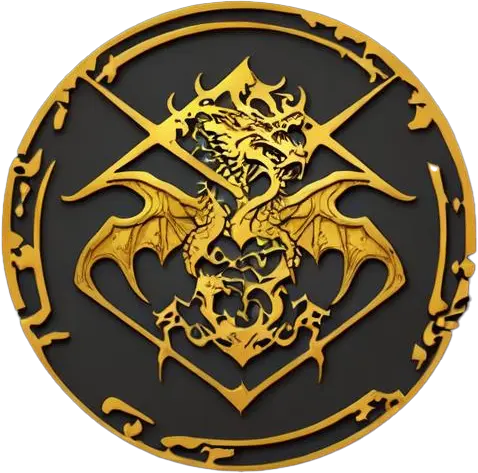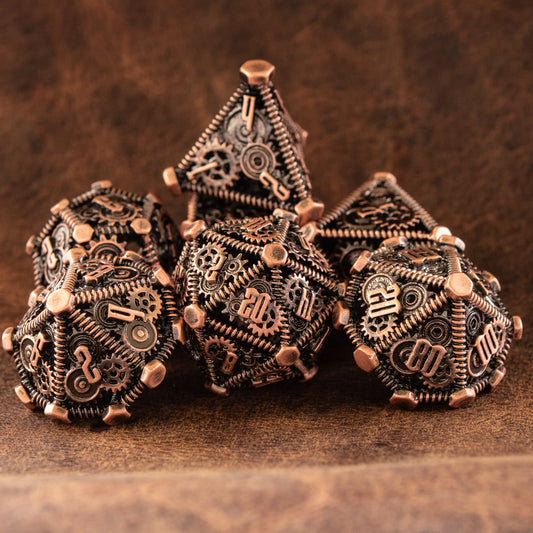What Are D&D Dice Called
Share
What Are D&D Dice Called?
Dungeons & Dragons (D&D) is a legendary tabletop role-playing game that has captivated the imaginations of millions of players worldwide. A key element that adds excitement and unpredictability to the game is the use of polyhedral dice. These dice come in various shapes and sizes, each serving a unique purpose in the gameplay. In this article, we will explore the different types of D&D dice, their specific names, and their roles in the game.
The Standard D&D Dice Set
A standard D&D dice set typically consists of seven different dice, each identified by the number of sides it possesses. Here is a breakdown of these dice:
- D4 (Tetrahedron)
- D6 (Cube)
- D8 (Octahedron)
- D10 (Pentagonal Trapezohedron)
- D12 (Dodecahedron)
- D20 (Icosahedron)
- Percentile Dice (D00)
D20: The Iconic Dice of D&D
The D20, or 20-sided die, is arguably the most iconic and frequently used die in Dungeons & Dragons. Its official name is the icosahedron. The D20 is used to determine the success or failure of most actions in the game, including attack rolls, skill checks, and saving throws. Rolling a natural 20 often results in a critical success, while rolling a 1 can lead to a critical failure, adding dramatic twists to the gameplay.
D12: A Die for Heavy Damage
The D12, or dodecahedron, is primarily used for determining damage from powerful weapons and spells. This 12-sided die is less commonly used than the D20 but plays a crucial role when it comes to dealing significant damage in combat. Barbarians, in particular, favor the D12 for their hit dice and weapons like the greataxe.
D10: Versatility in Damage and Percentiles
The D10, or pentagonal trapezohedron, is used for various purposes, including calculating damage for certain weapons and spells. Additionally, the D10 is used in conjunction with the percentile dice (D00) to generate random numbers between 1 and 100. This combination is often used for determining probabilities and outcomes of certain game events, such as magical effects or treasure finds.
D8: Medium-Sized Damage
The D8, or octahedron, is commonly used for determining damage from one-handed weapons and medium-level spells. Classes like fighters and paladins often use weapons that deal D8 damage, making this die a staple in many players' arsenals.
D6: The Familiar Cube
The D6, or cube, is the most familiar die to most people, as it is commonly used in many other board games. In D&D, the D6 is used for calculating damage for a variety of weapons and spells. It is also used in character creation to determine ability scores by rolling four D6s and summing the highest three rolls.
D4: The Smallest Damage
The D4, or tetrahedron, is used for calculating damage from small weapons and low-level spells. This four-sided die is unique in its shape and can be tricky to read. The number at the base of the die is the result of the roll.
Percentile Dice: Rolling for Percentages
The percentile dice, or D00, is used in combination with a D10 to generate a number between 1 and 100. This is particularly useful for determining probabilities and outcomes of certain game mechanics, such as wild magic effects or random encounters.
Specialized Dice: Expanding the Horizons
Beyond the standard set, there are specialized dice that add depth and variety to your gaming experience. These include:
- D2 (Coin): Used for binary decisions like heads or tails.
- D3 (Triangular Prism): Used for outcomes with three options.
- D5 (Pentagonal Prism): Offers finer granularity for percentile results.
- D7 (Heptagonal Prism): Used in specialized systems or for unique outcome ranges.
The Role of Dice in D&D
Dice in Dungeons & Dragons serve as the arbiters of fate, introducing an element of chance and unpredictability to the game. They determine the outcomes of actions, the success of spells, and the damage dealt in combat. This randomness adds excitement and suspense, ensuring that no two games are ever the same.
How to Roll Dice in D&D
Rolling dice in D&D is straightforward but can vary depending on the situation. Here are some common scenarios:
- Attack Rolls: Roll a D20 and add your attack modifier to determine if you hit the target.
- Damage Rolls: Roll the appropriate dice for your weapon or spell and add any relevant modifiers.
- Skill Checks: Roll a D20 and add your skill modifier to see if you succeed in a task.
- Saving Throws: Roll a D20 and add your saving throw modifier to resist effects like spells or traps.
- Percentile Rolls: Roll a D10 and a percentile die (D00) to generate a number between 1 and 100.
Tips for Rolling Dice
To enhance your dice-rolling experience, consider the following tips:
- Use a Dice Tray: A dice tray helps keep your rolls contained and prevents dice from rolling off the table.
- Invest in Quality Dice: High-quality dice are easier to read and provide a more satisfying rolling experience.
- Personalize Your Dice: Choose dice that match your character's theme or your personal style for added immersion.
The History of D&D Dice
The origins of D&D dice can be traced back to ancient civilizations. Polyhedral dice have been found in archaeological sites dating back to ancient Egypt and Rome. These dice were used for various games and divination practices.
In the early days of Dungeons & Dragons, game designer Gary Gygax sought to introduce more chaos and randomness into the game. He chose polyhedral dice for their unique shapes and wide range of possible outcomes. The D20, with its 20 sides, became the cornerstone of the game's mechanics, providing a balanced distribution of probabilities.
Different Materials for D&D Dice
D&D dice come in a variety of materials, each offering a unique feel and aesthetic. Some common materials include:
- Plastic: Affordable and widely available, plastic dice come in a multitude of colors and designs.
- Metal: Heavier and more durable, metal dice provide a satisfying heft and are often favored by serious players.
- Wood: Offering a natural and rustic look, wooden dice are a unique choice for those seeking something different.
- Stone: Dice made from precious stones or minerals add a touch of luxury and elegance to your gaming experience.
Collecting D&D Dice
Many Dungeons & Dragons enthusiasts enjoy collecting dice, amassing large collections with various colors, designs, and materials. Collecting dice can become a hobby in itself, with players seeking out rare and unique sets to add to their collection.
Frequently Asked Questions
Does everyone in a D&D session need their own set of dice? It is generally expected that each player brings their own set of dice to a D&D session. However, it is common for players to share dice when needed, especially for rolls that require multiple dice of the same type.
What is a "dirty 20" in D&D? A "dirty 20" refers to a roll of 20 on a D20 that is achieved by adding modifiers, rather than rolling a natural 20. Unlike a natural 20, a dirty 20 does not result in a critical success.
What does the number before the dice mean in the handbooks (e.g., hit: 11 (2D8 + 2))? The number before the dice indicates the number of dice to roll. For example, "2D8 + 2" means you roll two eight-sided dice and add 2 to the total result.
How can I roll dice better? While rolling dice is largely a matter of chance, you can improve your experience by using a dice tray, investing in quality dice, and ensuring you have a comfortable rolling surface.
Enhancing Your D&D Experience with Dice
Dice are more than just tools for determining outcomes in Dungeons & Dragons; they are an integral part of the game's charm and excitement. The tactile sensation of rolling dice, the anticipation of the result, and the impact on the game's narrative all contribute to the immersive experience that D&D offers.
Whether you are a seasoned adventurer or a newcomer to the world of Dungeons & Dragons, understanding the different types of dice and their roles in the game will enhance your gameplay and deepen your appreciation for this beloved tabletop RPG. So gather your dice, prepare your character sheet, and embark on an epic journey filled with adventure, danger, and the roll of the dice.

